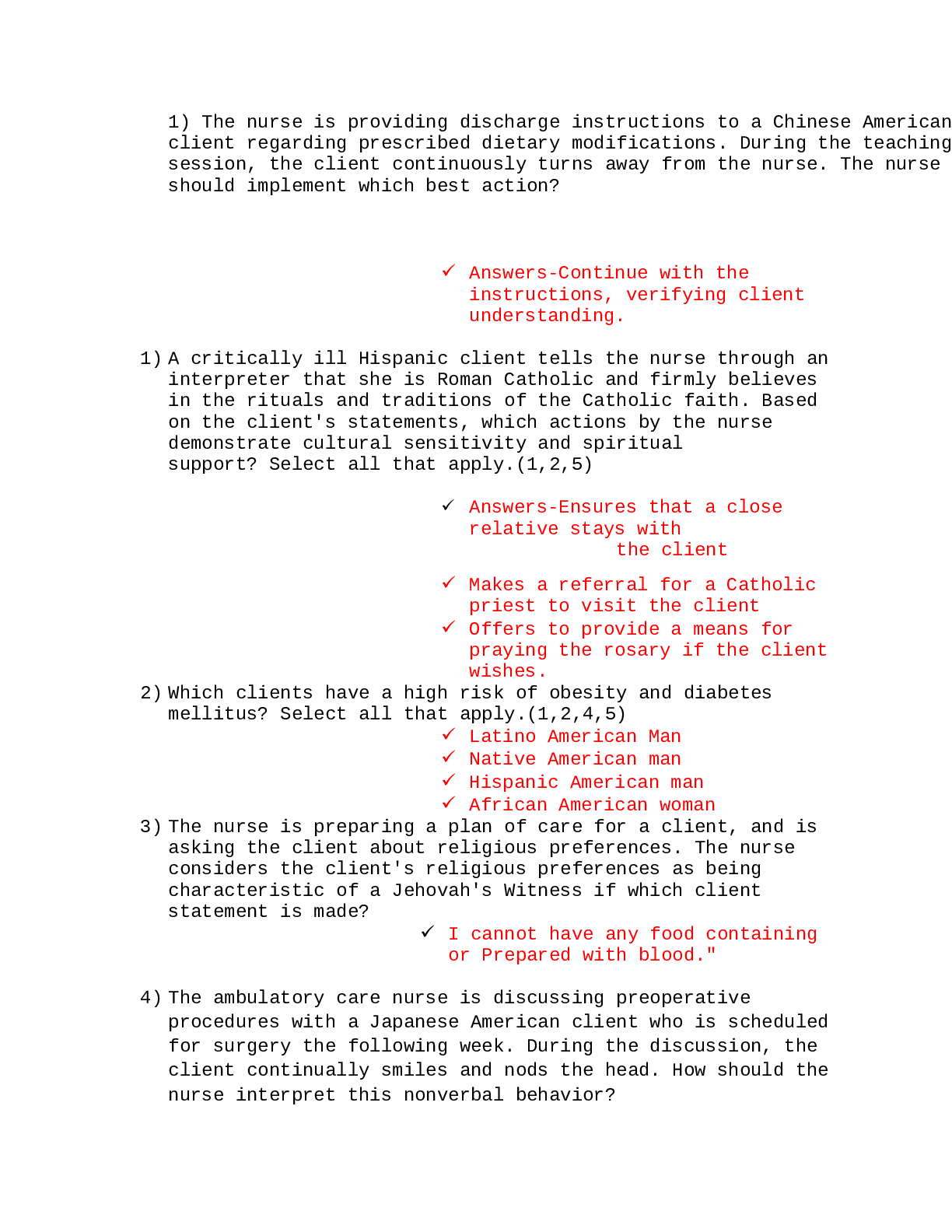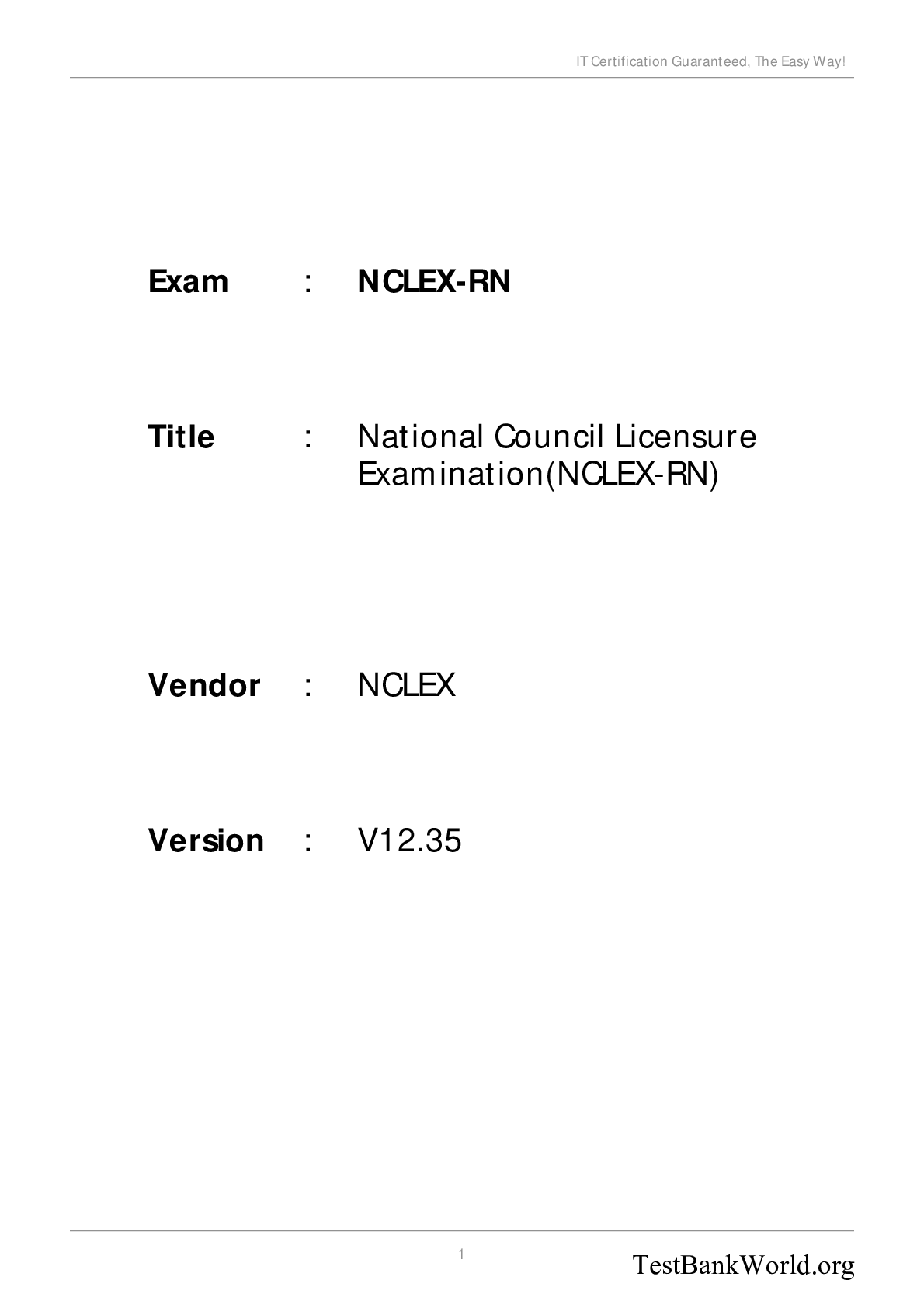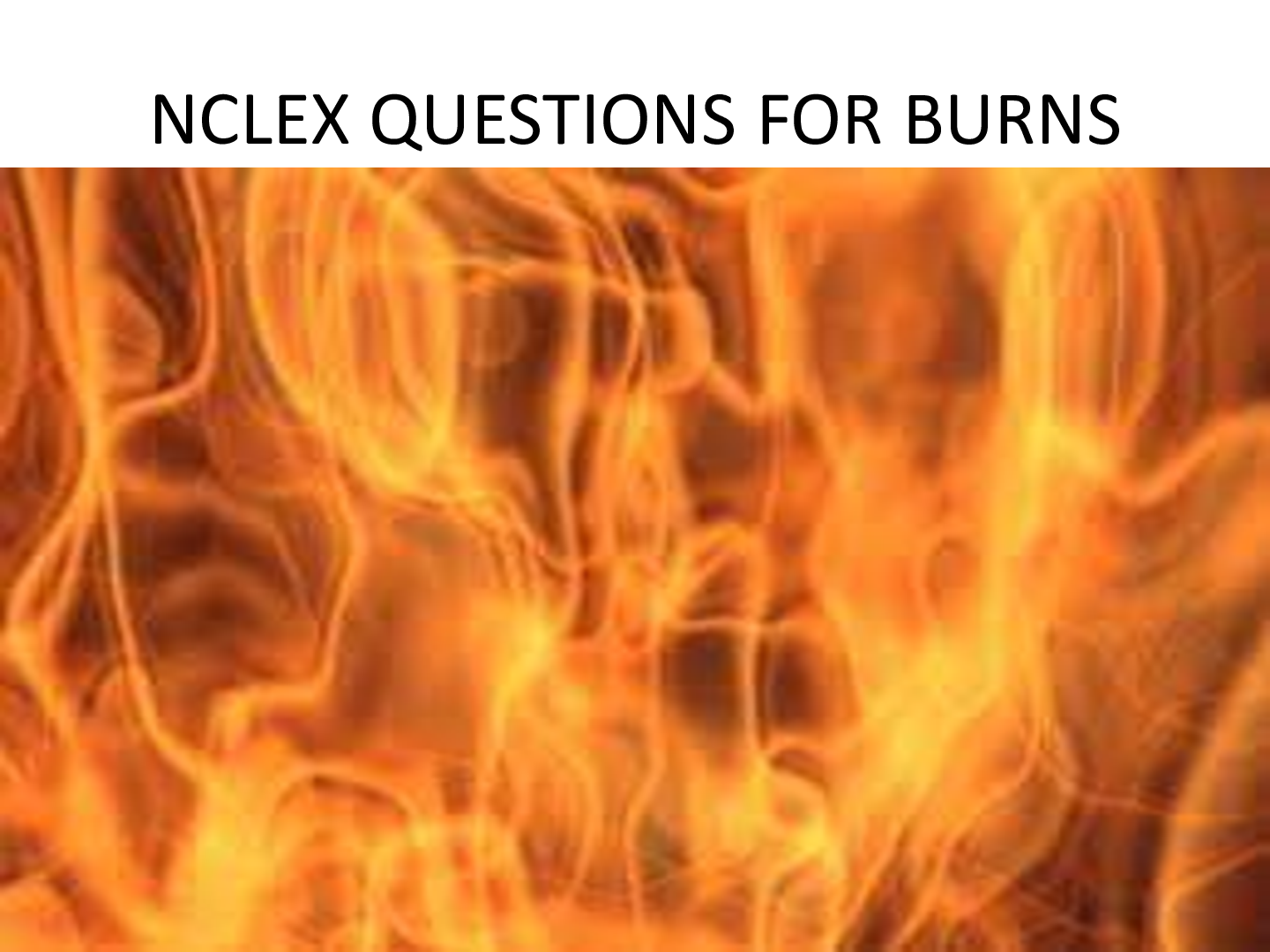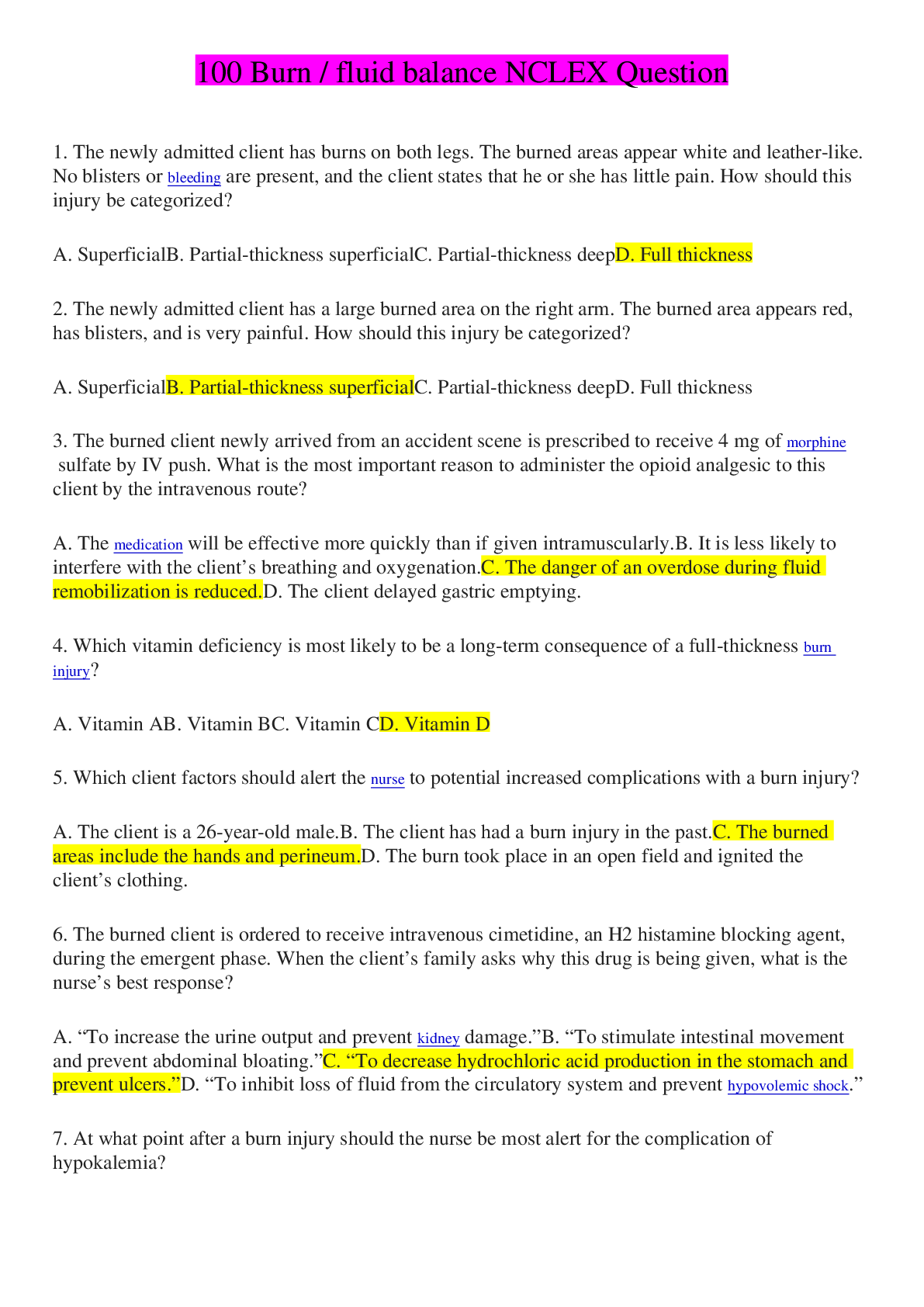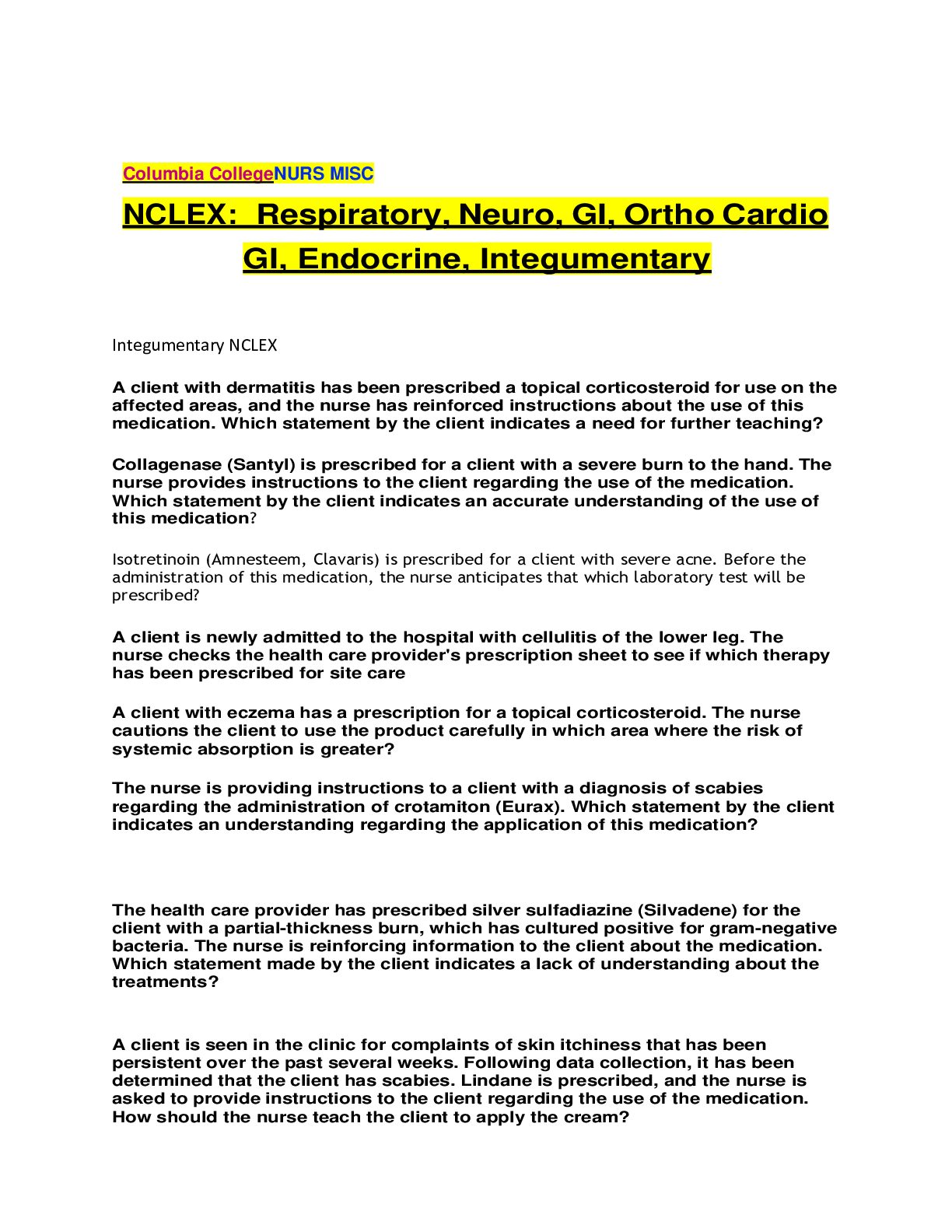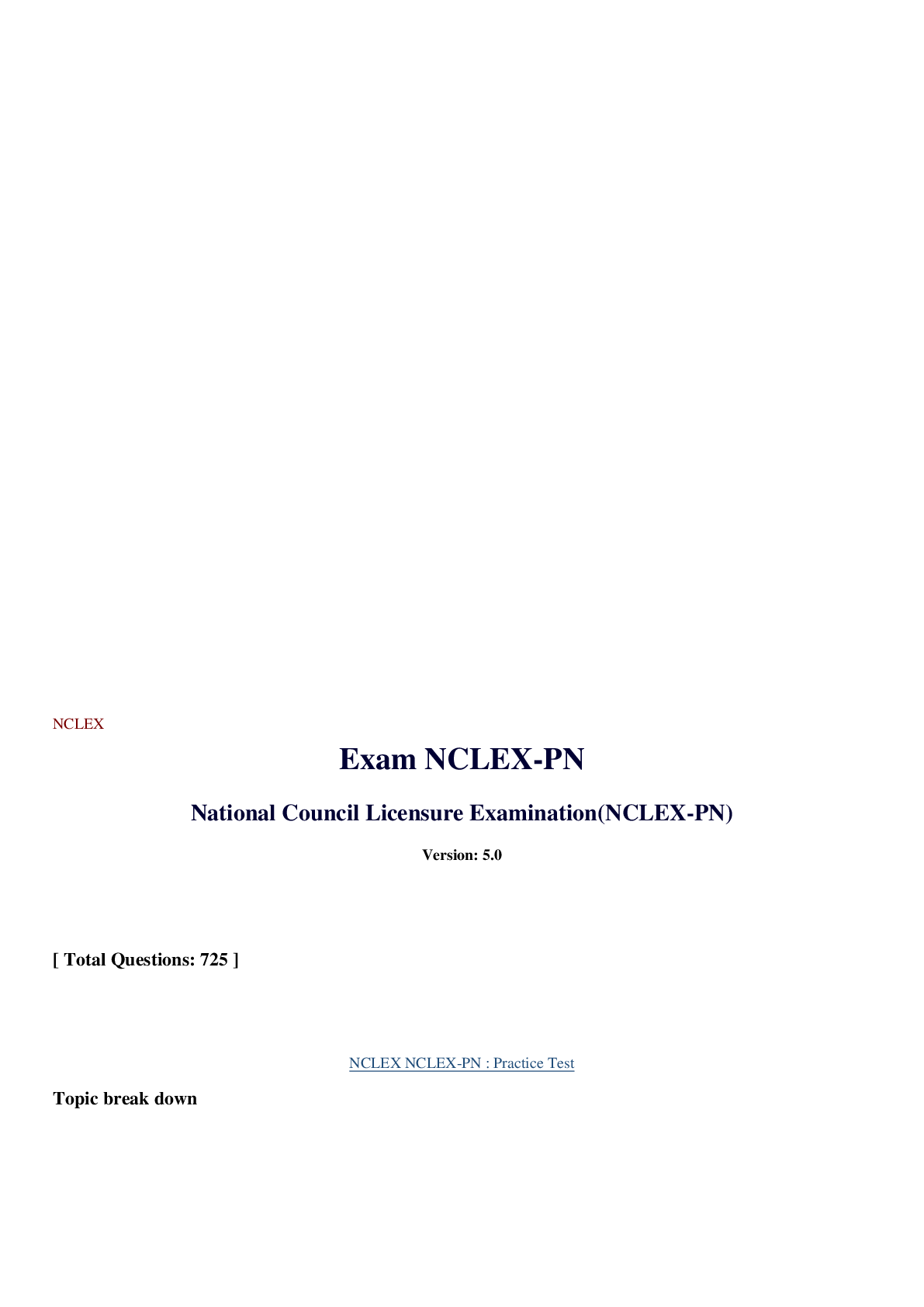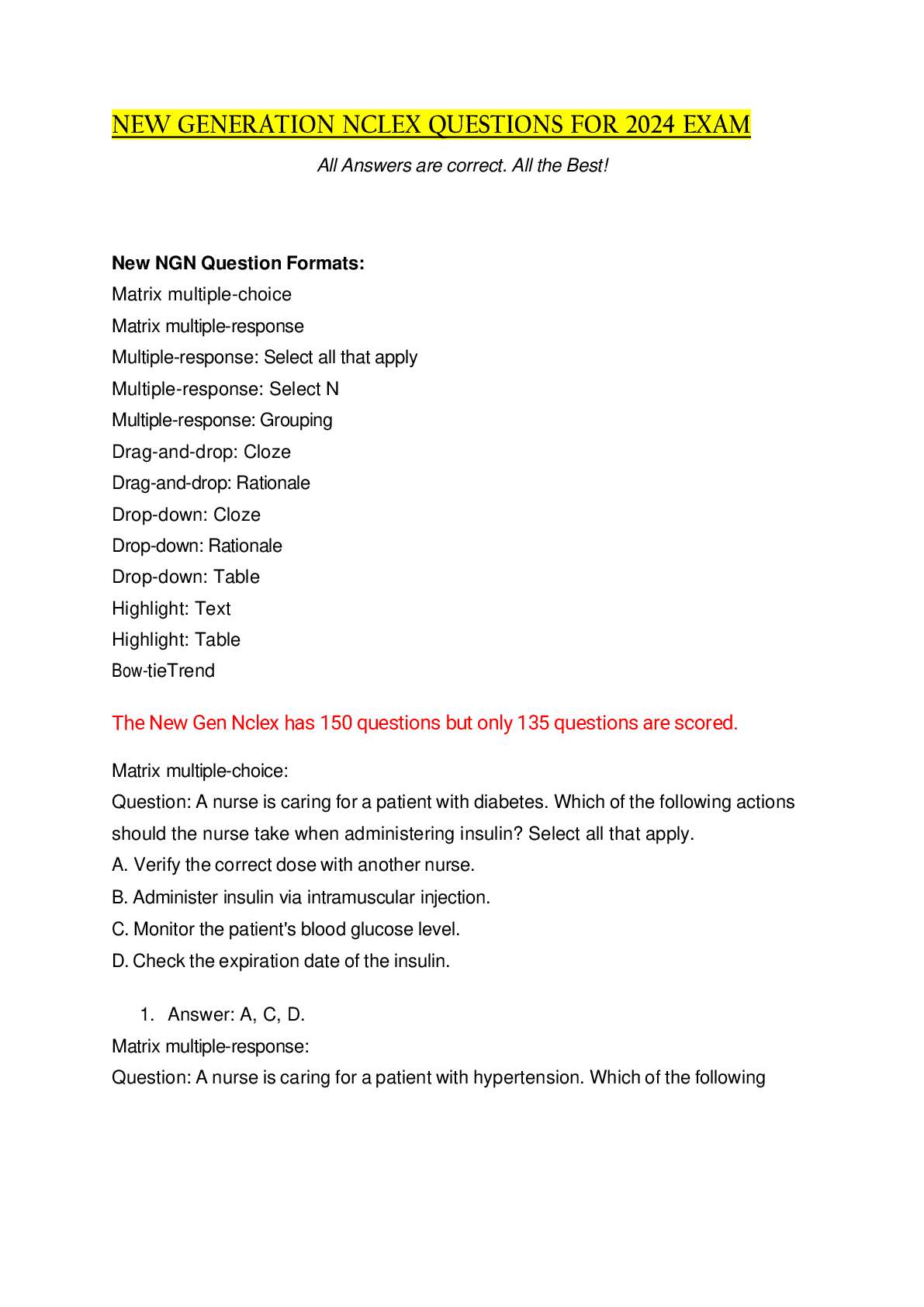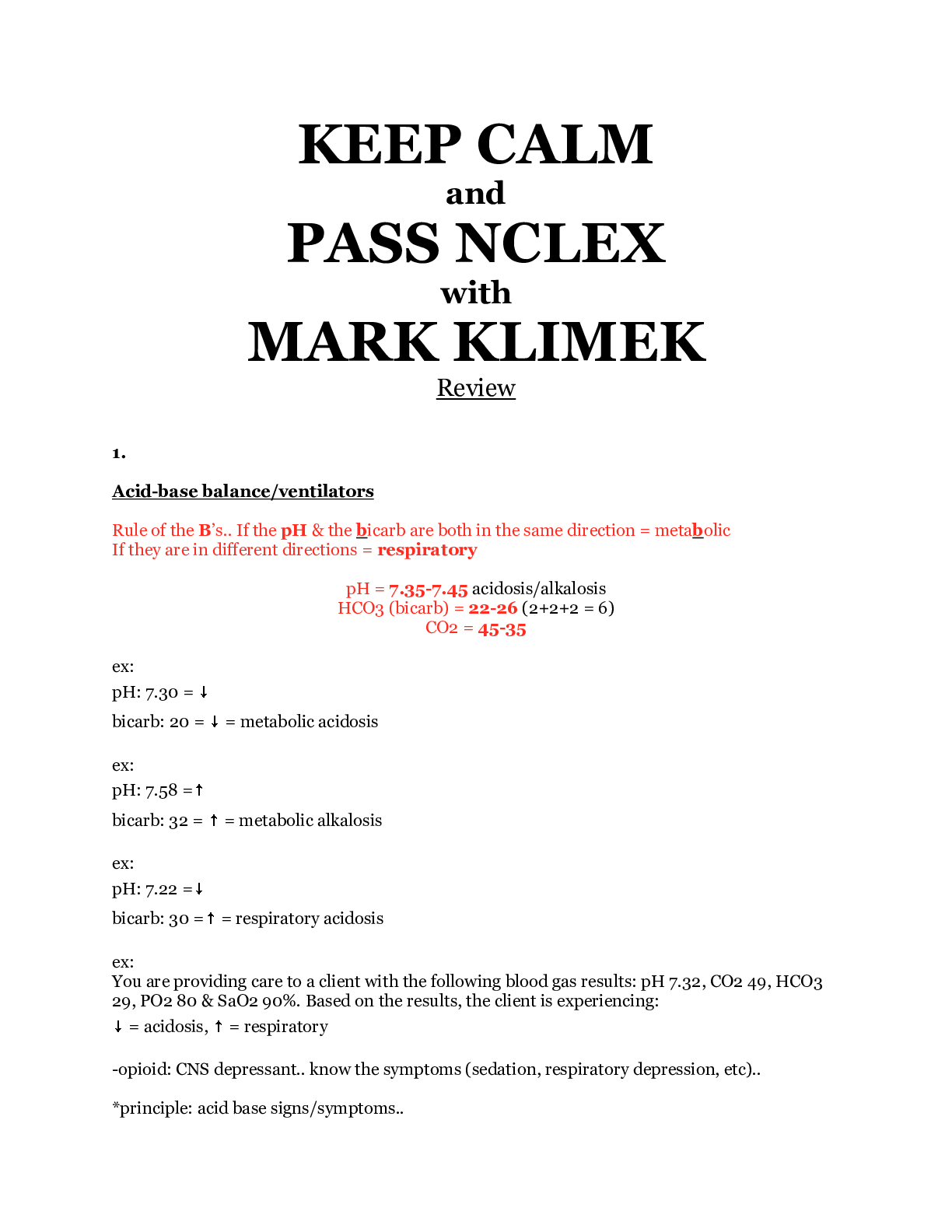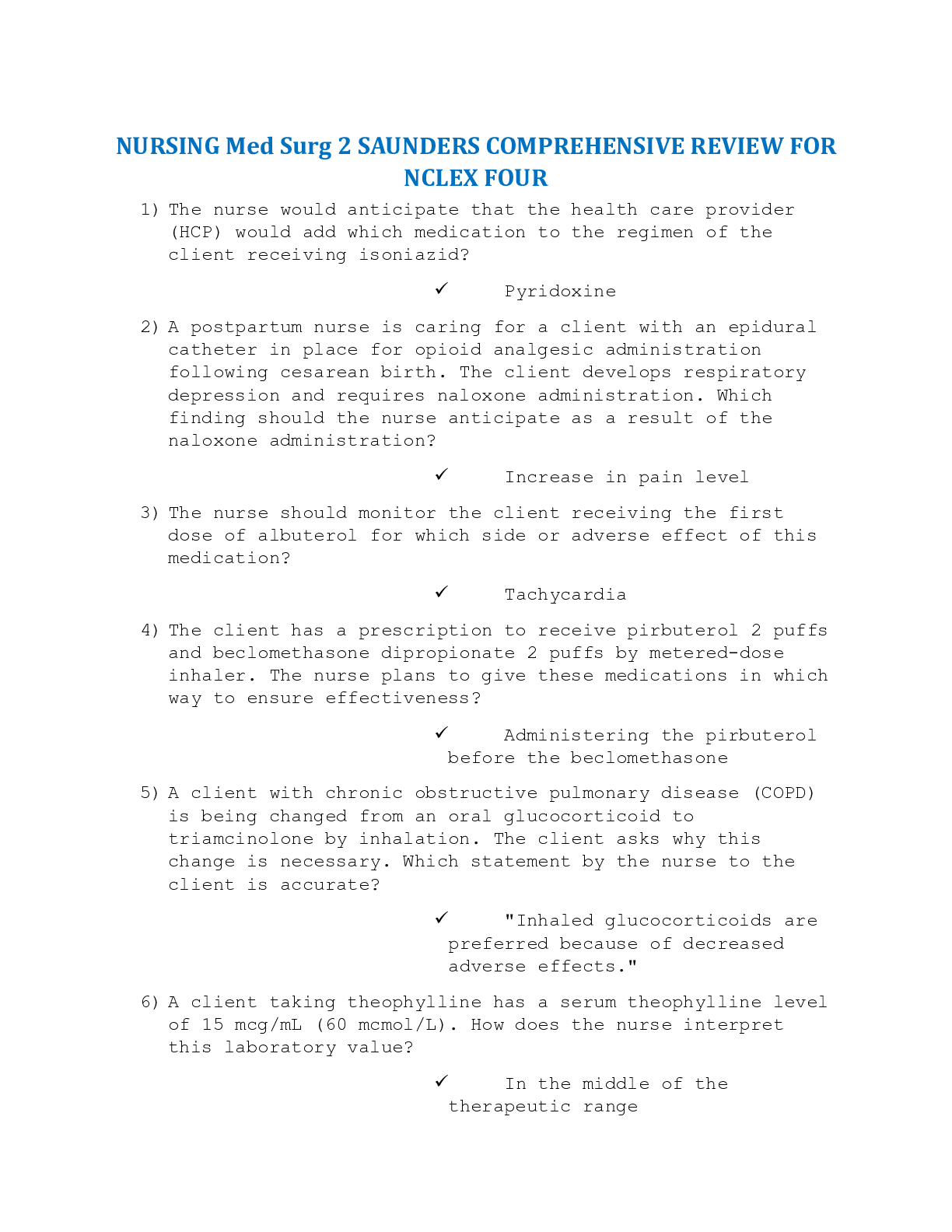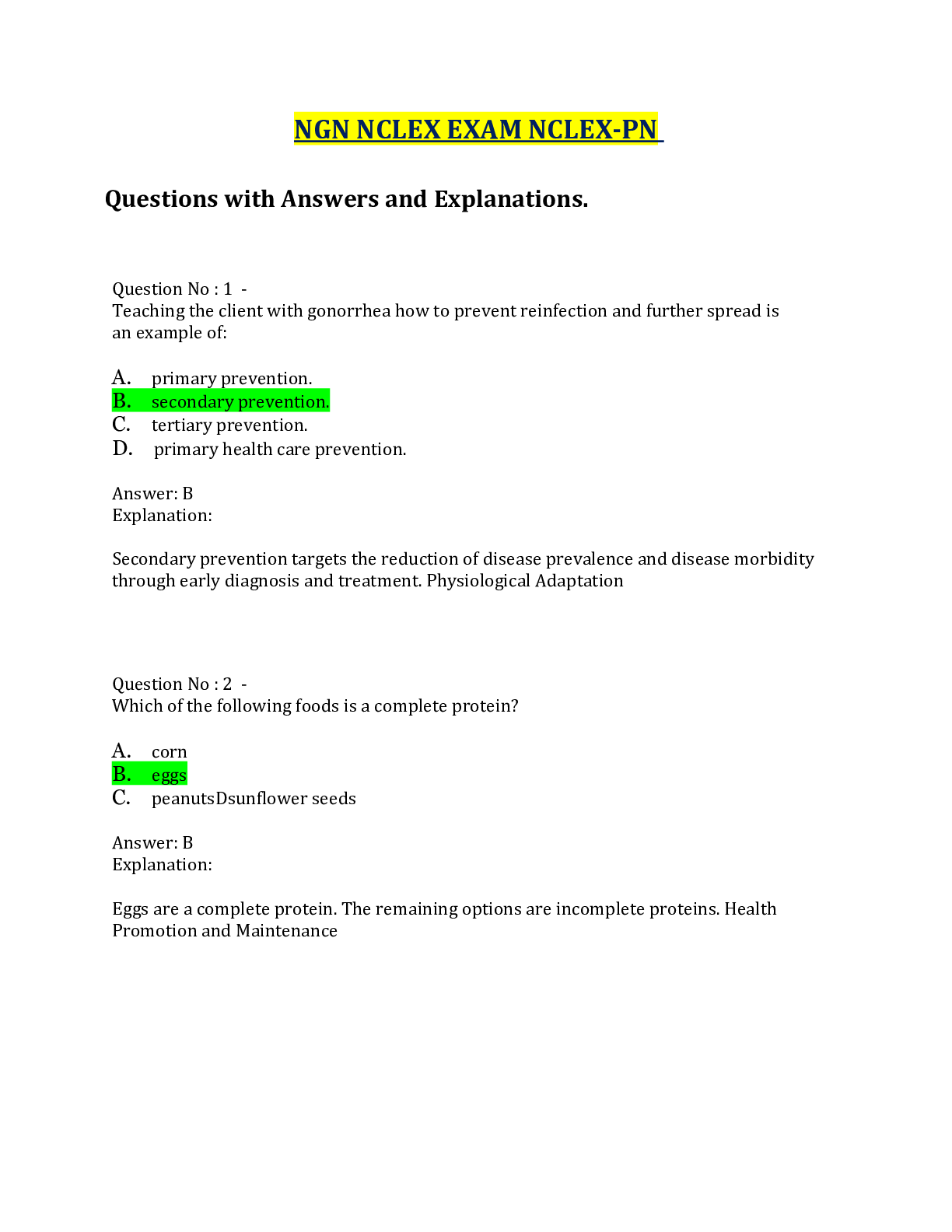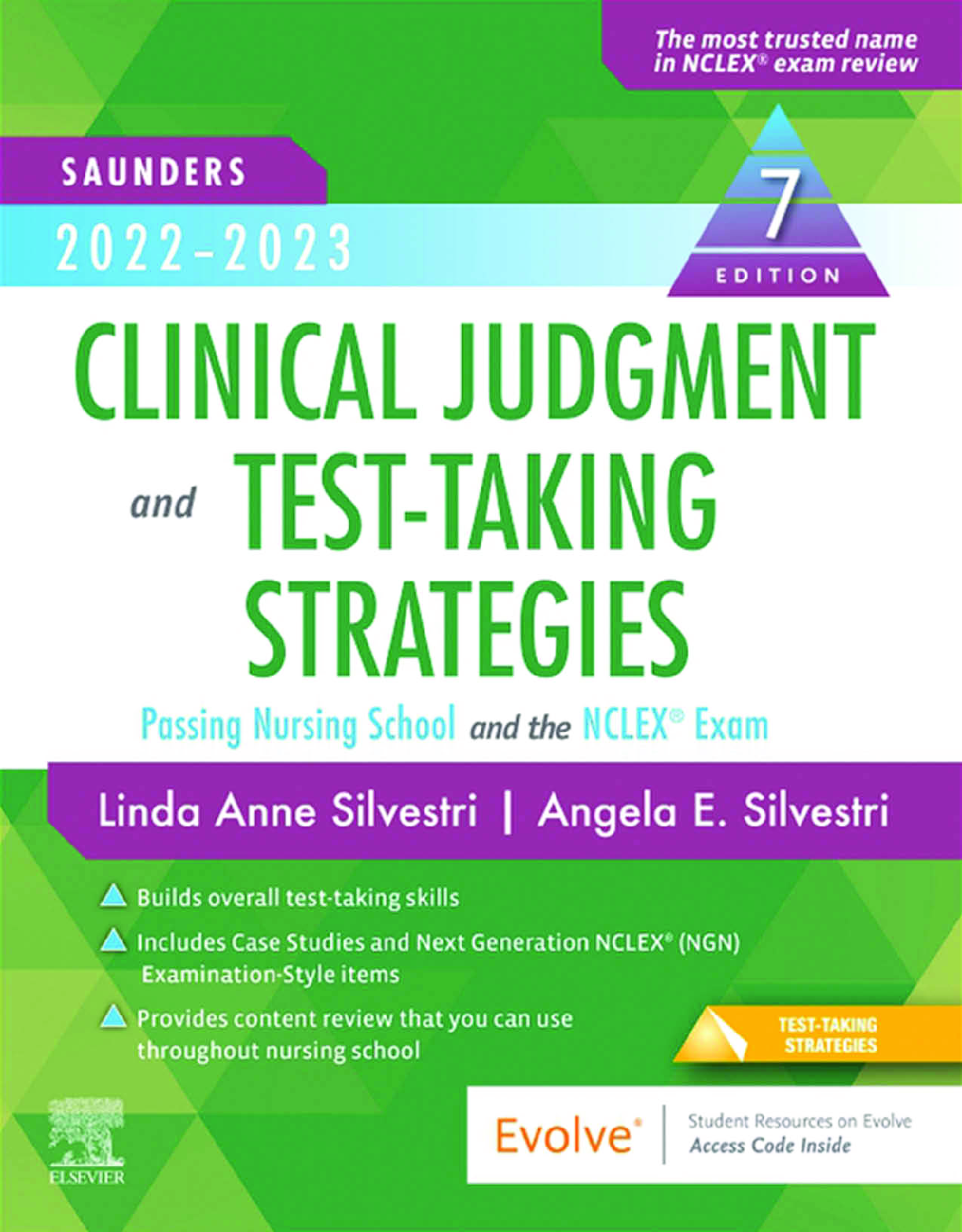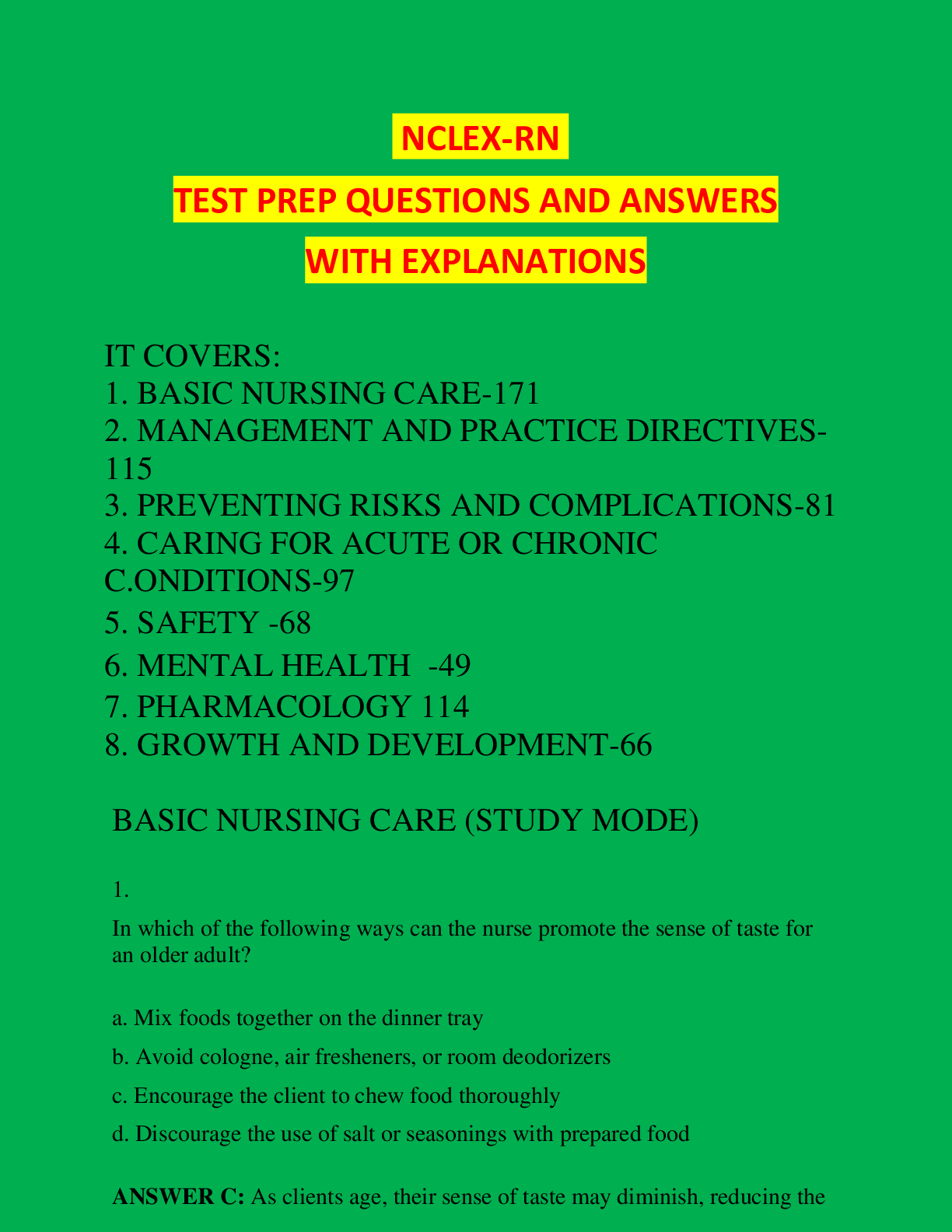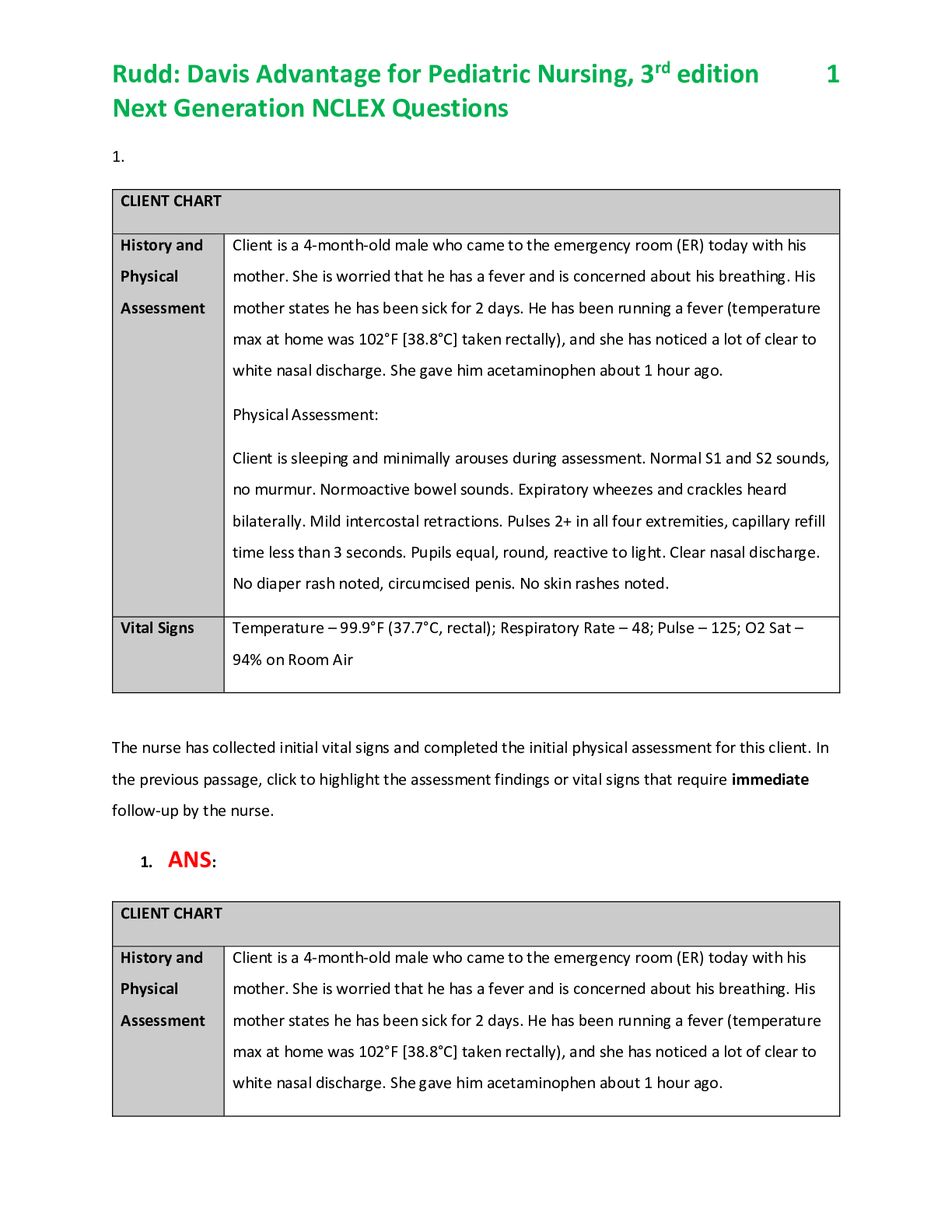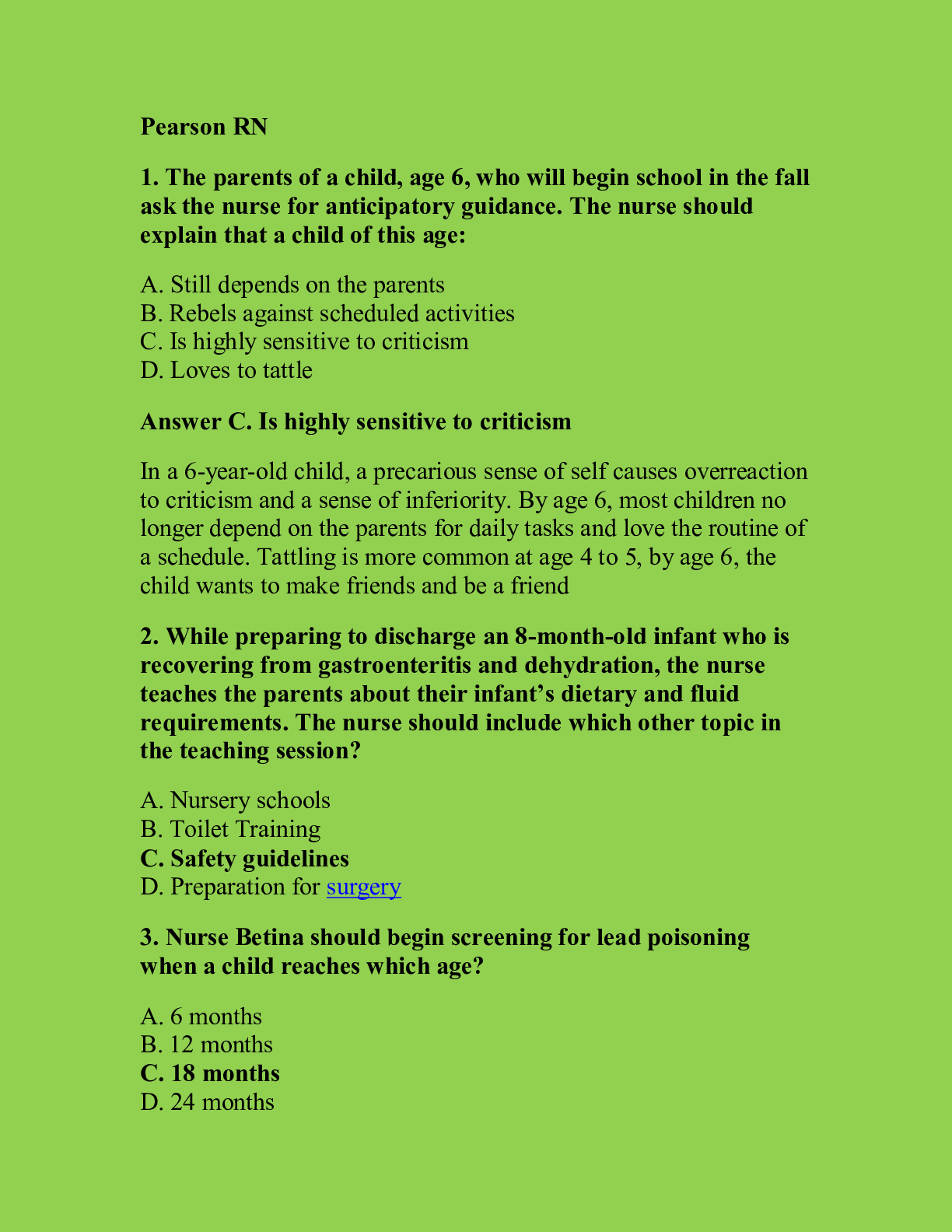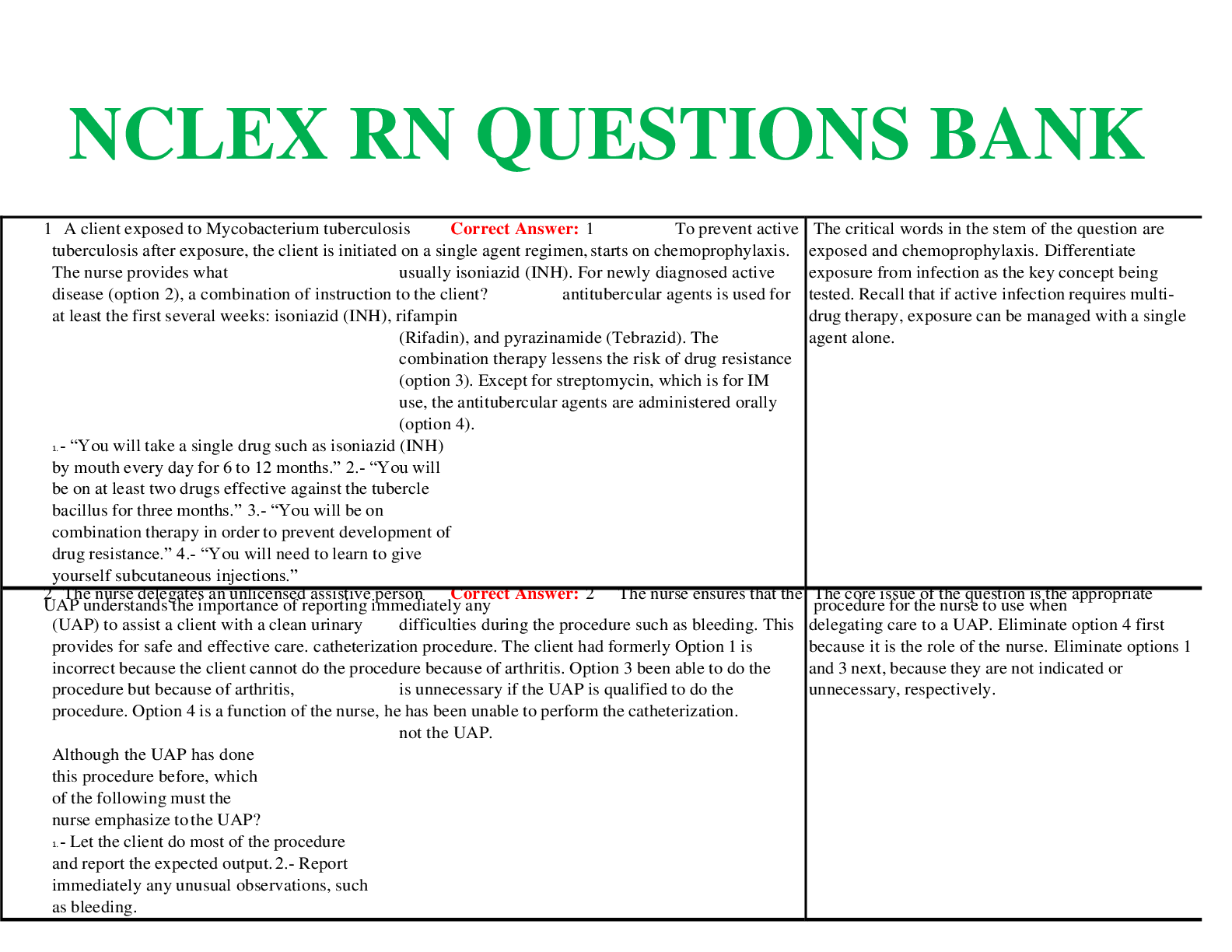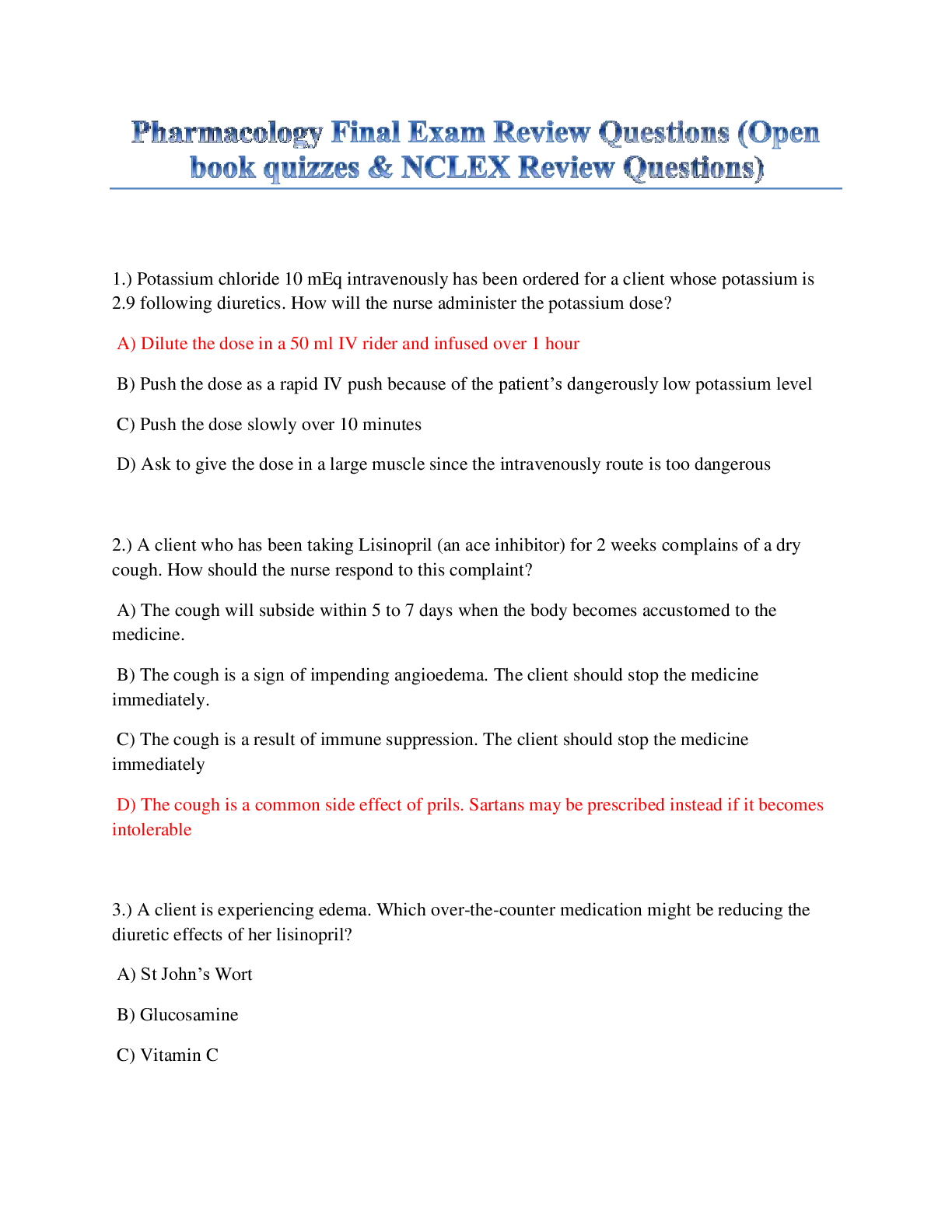*NURSING > NCLEX > NCLEX-RN final Exams questions with the correct answers;This questions have been previously tested f (All)
NCLEX-RN final Exams questions with the correct answers;This questions have been previously tested from the previous exams and have been updated to be of use in 2021.
Document Content and Description Below
NCLEX-RN final Exams questions with the correct answers;This questions have been previously tested from the previous exams and have been updated to be of use in 2021. QUESTION 1 Which classification... of drugs is contraindicated for the client with hypertrophic cardiomyopathy? A. Positive inotropes B. Vasodilators C. Diuretics D. Antidysrhythmics Answer: A Explanation: (A) Positive inotropic agents should not be administered owing to their action of increasing myocardial contractility. Increased ventricular contractility would increase outflow tract obstruction in the client with hypertrophic cardiomyopathy. (B) Vasodilators are not typically prescribed but are not contraindicated. (C) Diuretics are used with caution to avoid causing hypovolemi A. (D) Antidysrhythmics are typically needed to treat both atrial and ventricular dysrhythmias. QUESTION 2 Signs and symptoms of an allergy attack include which of the following? A. Wheezing on inspiration B. Increased respiratory rate C. Circumoral cyanosis D. Prolonged expiration Answer: D Explanation: (A) Wheezing occurs during expiration when air movement is impaired because of constricted edematous bronchial lumin A. (B) Respirations are difficult, but the rate is frequently normal. (C) The circumoral area is usually pale. Cyanosis is not an early sign of hypoxi A. (D) Expiration is prolonged because the alveoli are greatly distended and air trapping occurs. QUESTION 3 A client confides to the nurse that he tasted poison in his evening meal. This would be an example of what type of hallucination? A. Auditory B. Gustatory C. Olfactory D. Visceral Answer: B Explanation: (A) Auditory hallucinations involve sensory perceptions of hearing. (B) Gustatory hallucinations involve sensory perceptions of taste. (C) Olfactory hallucinations involve sensory perceptions of smell. (D) Visceral hallucinations involve sensory perceptions of sensation. QUESTION 4 Which of the following findings would be abnormal in a postpartal woman? A. Chills shortly after delivery B. Pulse rate of 60 bpm in morning on first postdelivery day C. Urinary output of 3000 mL on the second day after delivery D. An oral temperature of 101F (38.3C) on the third day after delivery Answer: D Explanation: (A) Frequently the mother experiences a shaking chill immediately after delivery, which is related to a nervous response or to vasomotor changes. If not followed by a fever, it is clinically innocuous. (B) The pulse rate during the immediate postpartal period may be low but presents no cause for alarm. The body attempts to adapt to the decreased pressures intra-abdominally as well as from the reduction of blood flow to the vascular bed. (C) Urinary output increases during the early postpartal period (12–24 hours) owing to diuresis. The kidneys must eliminate an estimated 2000–3000 mL of extracellular fluid associated with a normal pregnancy. (D) A temperature of 100.4F (38C) may occur after delivery as a result of exertion and dehydration of labor. However, any temperature greater than 100.4F needs further investigation to identify any infectious process. QUESTION 5 A six-month-old infant has been admitted to the emergency room with febrile seizures. In the teaching of the parents, the nurse states that: A. Sustained temperature elevation over 103F is generally related to febrile seizures B. Febrile seizures do not usually recur C. There is little risk of neurological deficit and mental retardation as sequelae to febrile seizures D. Febrile seizures are associated with diseases of the central nervous system Answer: C Explanation: (A) The temperature elevation related to febrile seizures generally exceeds 101F, and seizures occur during the temperature rise rather than after a prolonged elevation. (B) Febrile seizures may recur and are more likely to do so when the first seizure occurs in the 1st year of life. (C) There is little risk of neurological deficit, mental retardation, or altered behavior secondary to febrile seizures. (D) Febrile seizures are associated with disease of the central nervous system. QUESTION 6 A client diagnosed with bipolar disorder continues to be hyperactive and to lose weight. Which of the following nutritional interventions would be most therapeutic for him at this time? A. Small, frequent feedings of foods that can be carried B. Tube feedings with nutritional supplements C. Allowing him to eat when and what he wants D. Giving him a quiet place where he can sit down to eat meals Answer: A Explanation: (A) The manic client is unable to sit still long enough to eat an adequate meal. Small, frequent feedings with finger foods allow him to eat during periods of activity. (B) This type of therapy should be implemented when other methods have been exhausted. (C) The manic client should not be in control of his treatment plan. This type of client may forget to eat. (D) The manic client is unable to sit down to eat full meals. QUESTION 7 A client with bipolar disorder taking lithium tells the nurse that he has ringing in his ears, blurred vision, and diarrhe A. The nurse notices a slight tremor in his left hand and a slurring pattern to his speech. Which of the following actions by the nurse is appropriate? A. Administer a stat dose of lithium as necessary. B. Recognize this as an expected response to lithium. C. Request an order for a stat blood lithium level. D. Give an oral dose of lithium antidote. Answer: C Explanation: (A) These symptoms are indicative of lithium toxicity. A stat dose of lithium could be fatal. (B) These are toxic effects of lithium therapy. (C) The client is exhibiting symptoms of lithium toxicity, which may be validated by lab studies. (D) There is no known lithium antidote. QUESTION 8 A diagnosis of hepatitis C is confirmed by a male client’s physician. The nurse should be knowledgeable of the differences between hepatitis A, B, and C. Which of the following are characteristics of hepatitis C? A. The potential for chronic liver disease is minimal. B. The onset of symptoms is abrupt. C. The incubation period is 2–26 weeks. D. There is an effective vaccine for hepatitis B, but not for hepatitis C. Answer: C Explanation: (A) Hepatitis C and B may result in chronic liver disease. Hepatitis A has a low potential for chronic liver disease. (B) Hepatitis C and B have insidious onsets. Hepatitis A has an abrupt onset. (C) Incubation periods are as follows: hepatitis C is 2–26 weeks, hepatitis B is 6–20 weeks, and hepatitis A is 2–6 weeks. (D) Only hepatitis B has an effective vaccine. QUESTION 9 Hypoxia is the primary problem related to near-drowning victims. The first organ that sustains irreversible damage after submersion in water is the: A. Kidney (urinary system) B. Brain (nervous system) C. Heart (circulatory system) D. Lungs (respiratory system) Answer: B Explanation: (A) The kidney can survive after 30 minutes of water submersion. (B) The cerebral neurons sustain irreversible damage after 4–6 minutes of water submersion. (C) The heart can survive up to 30 minutes of water submersion. (D) The lungs can survive up to 30 minutes of water submersion. QUESTION 10 Which of the following activities would be most appropriate during occupational therapy for a client with bipolar disorder? A. Playing cards with other clients B. Working crossword puzzles C. Playing tennis with a staff member D. Sewing beads on a leather belt Answer: C Explanation: (A) This activity is too competitive, and the manic client might become abusive toward the other clients. (B) During mania, the client’s attention span is too short to accomplish this task. (C) This activity uses gross motor skills, eases tension, and expands excess energy. A staff member is better equipped to interact therapeutically with clients. (D) This activity requires the use of fine motor skills and is very tedious. [Show More]
Last updated: 1 year ago
Preview 1 out of 86 pages
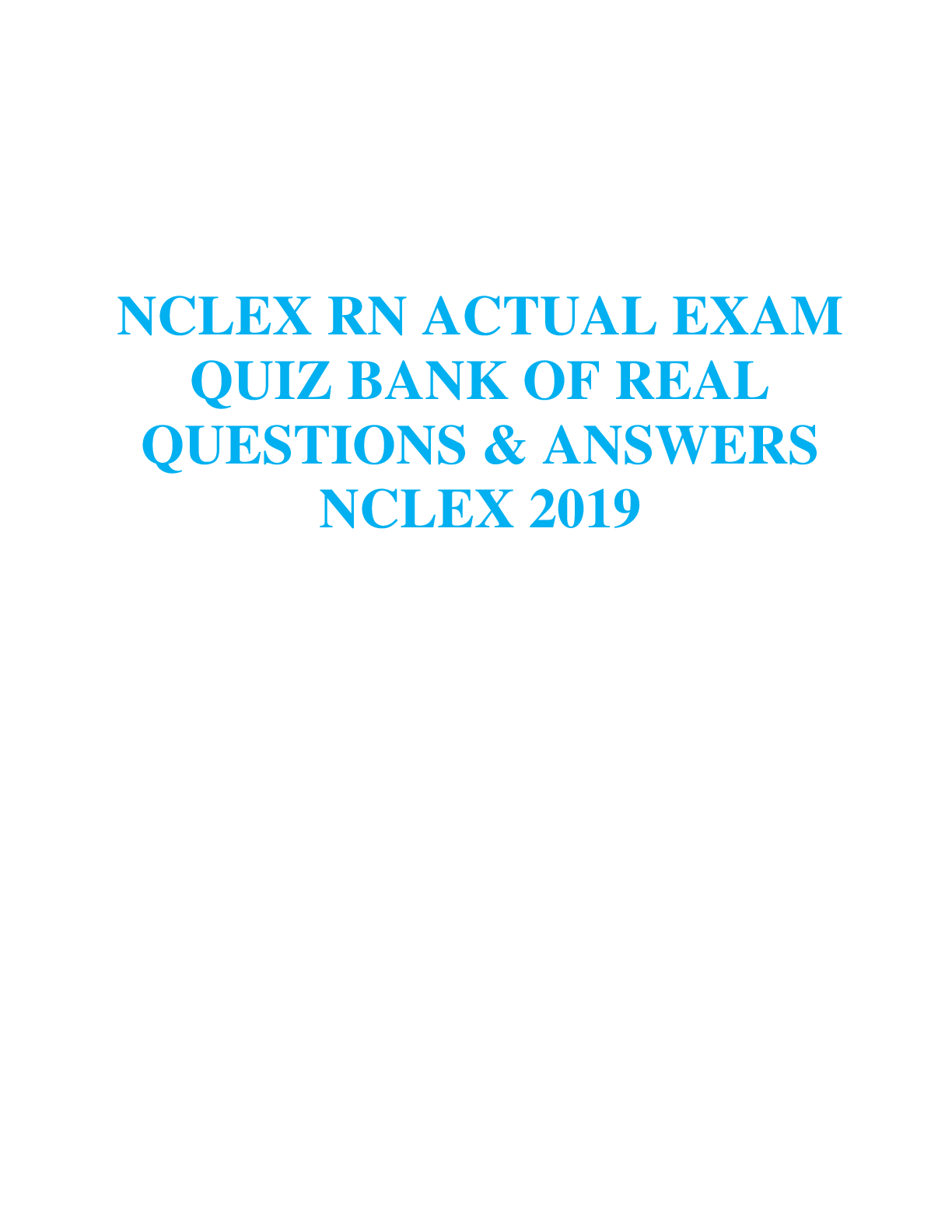
Reviews( 0 )
Document information
Connected school, study & course
About the document
Uploaded On
Dec 28, 2020
Number of pages
86
Written in
Additional information
This document has been written for:
Uploaded
Dec 28, 2020
Downloads
0
Views
70


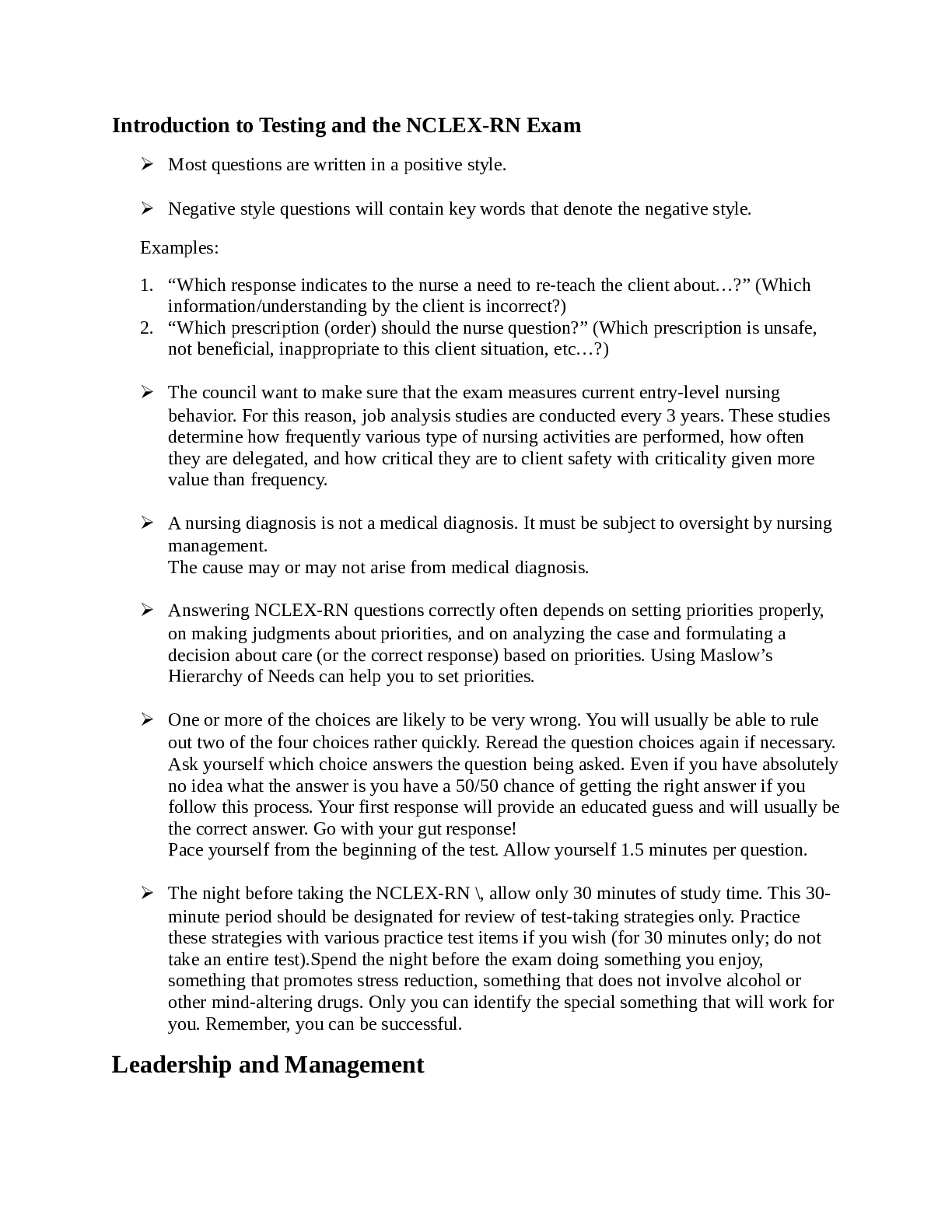
.png)

